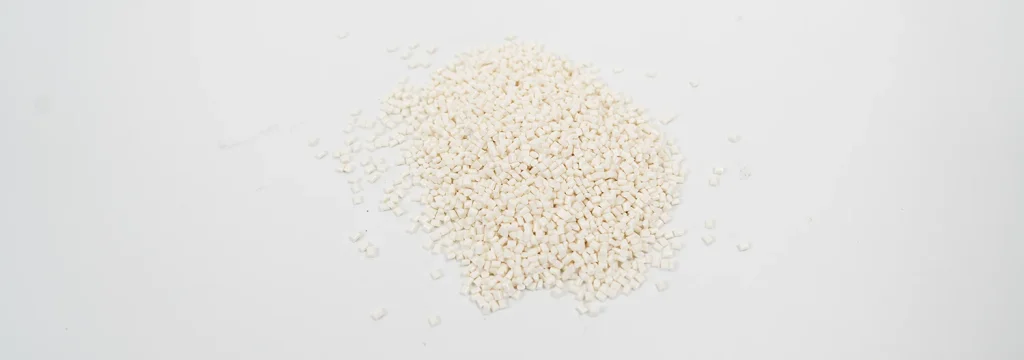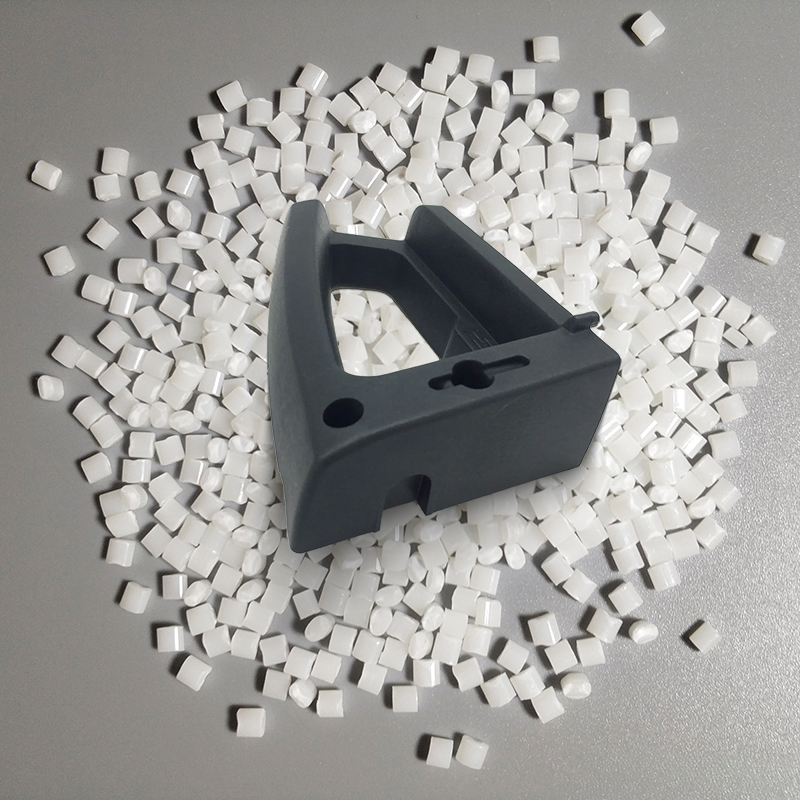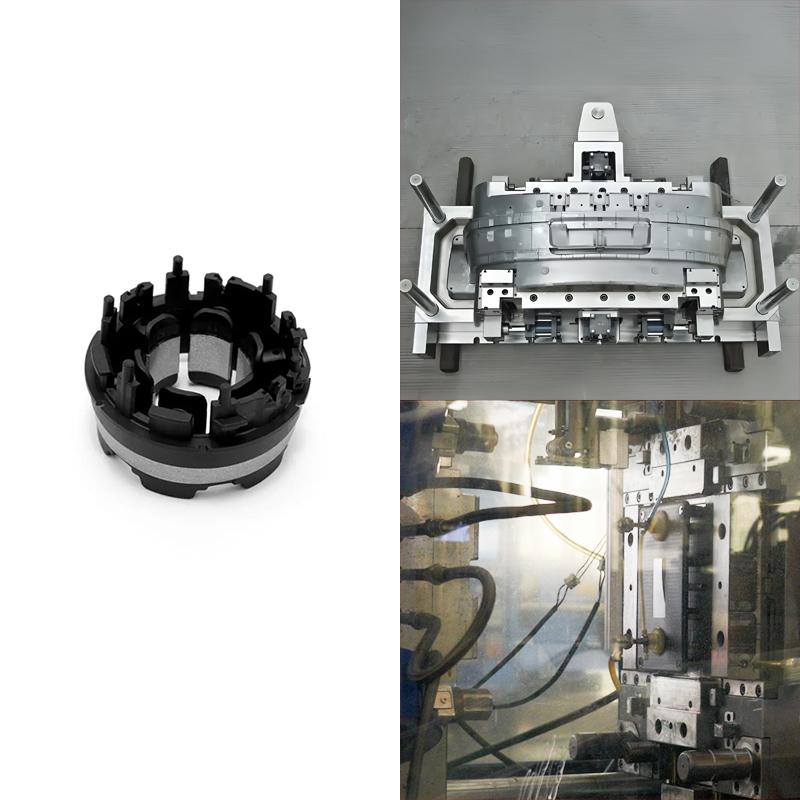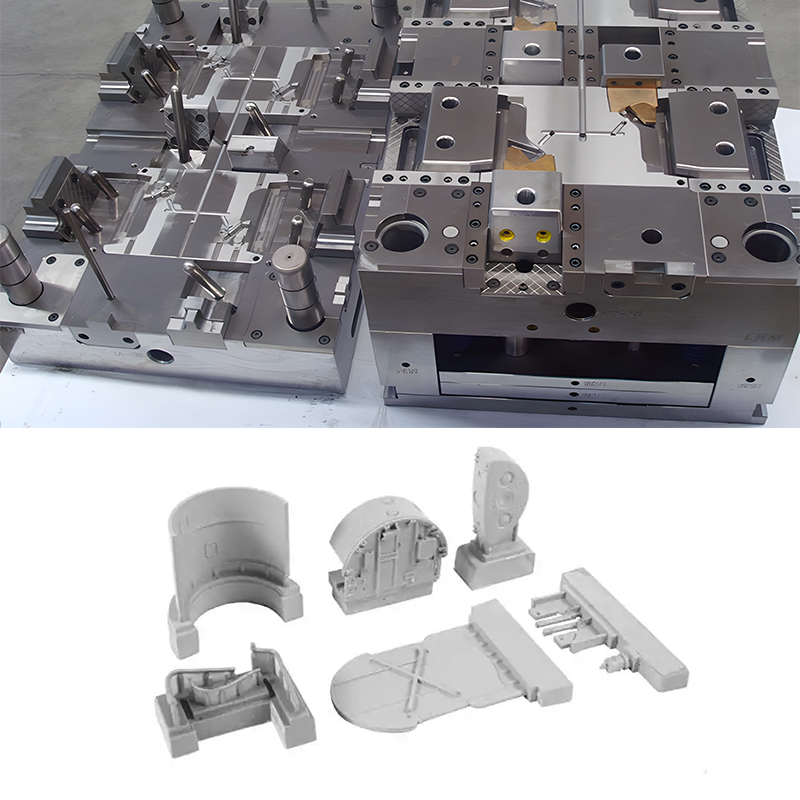With the growing complexity of product manufacturing, selecting the right materials is crucial for any product’s success. Due to this reason, ABS plastic, short for Acrylonitrile Butadiene Styrene, is a popular material considered widely for its versatility and dependability.
Specifically, designers and manufacturers broadly consider this material for its impact resistance, toughness, and lightweight nature. Its versatility further makes ABS machining, molding, and fabrication easier, making it a more suitable manufacturing material across multiple industries.
Despite its popularity, understanding the properties is crucial for designers and manufacturers seeking to leverage its full potential. It is also important to understand the wide industrial applications, manufacturing processes, how ABS differs from alternative materials, and the different processes you can consider for ABS plastic manufacturing.

To help you better understand this popular plastic, this detailed ABS plastic guide will explore all that and more. So keep reading to learn all about it!
Understanding ABS Plastic: Composition and Manufacturing
So, what is ABS material? ABS plastic material, an acronym for Acrylonitrile Butadiene Styrene, presents a versatile and eco-friendly option for manufacturers. Comprising three key monomers – Acrylonitrile, Butadiene, and Styrene – ABS combines high chemical resistance, toughness, and rigidity, making it a preferred choice across industries.
Composition of ABS Plastic Material
Did you know that the addition of butadiene in the 1950s significantly improved plastic ABS’s processability and toughness, making it commercially viable? In terms of density, it is approximately 1.05 g/cm³ dense and exhibits rigidity, strength, and chemical resistance, although it’s sensitive to polar solvents.
When it comes to understanding what is ABS plastic, this specific plastic is a composition of three primary monomers as shown in the table below: Acrylonitrile, Butadiene, and Styrene. Each monomer contributes distinct properties to the overall composition of ABS, resulting in its unique characteristics.
Chemical Composition
| Monomer | Chemical Structure |
| Acrylonitrile | CH2=CHCN |
| Butadiene | CH2=CH-CH=CH2 |
| Styrene | C6H5CH=CH2 |
Chemical Properties
High-quality ABS plastic exhibits remarkable resilience to alkalis and diluted acids, ensuring the longevity and reliability of products exposed to such chemicals.
While it demonstrates moderate resistance to aliphatic hydrocarbons, careful consideration is needed for applications involving alcohols, hydrocarbons, and halogenated hydrocarbons due to its limited resistance to these substances.
Typical ABS Properties
| Property | Unit | Value |
| Density | g mL-1 | 1.03 – 1.14 |
| Coefficient of Thermal Expansion | cm / (cm °C) | 2.0 – 10.3 |
| Thermal Conductivity | x 10-5 W / mK | 0.17 – 0.23 |
| Heat Deflection Temperature, 0.5 MPa | °C | 88 – 107 |
| Heat Deflection Temperature, 1.8 MPa | °C | 71 – 103 |
| Rockwell Hardness, R Scale | – | R102 – R104 |
| Compressive Strength | MPa | – |
| Flexural Modulus | MPa | 1550 – 2580 |
| Flexural Strength, Yield | MPa | 50 – 162 |
| Tensile Strength, Yield at 23°C | MPa | 28 – 120 |
| Izod Notched | J / m | 72 |
| Dielectric Strength | V/mm x 104 | 1.4 – 3.1 |
| Volume Resistivity | Ohm-cm | – |
| Dielectric Constant @ 1 MHz | – | 3.1 – 3.4 |
| Dissipation Factor @ 1 MHz | n/a, x 10-4 | 80 – 90 |
| Mold Shrinkage | % | 0.002 – 0.007 |
| Processing Temperature | °C | 205 – 275 |
| Continuous Service Temperature | °C | – |
| Water Absorption, 24 hr. Immersion | % | 0.26 – 1.70 |
ABS Properties and Characteristics
This plastic stands out as an optimal material for a diverse array of systemic applications, thanks to its multifaceted attributes. Let’s delve into some of the key ABS properties, shedding light on why it’s a preferred choice across various industries.
Mechanical Stability and Weldability
This polymer maintains consistent mechanical strength and stability over time and under various conditions, reinforcing its suitability for long-term applications. Additionally, ABS is known for its exceptional weldability, facilitating the efficient joining of parts in ABS plastic manufacturing and construction processes, thus enhancing productivity.
Strength and Durability
ABS exhibits remarkable resistance to impact, even in low-temperature conditions, making it highly versatile for environments experiencing significant temperature fluctuations. Its inherent rigidness and strength make it ideal for applications requiring structural integrity, such as drones and rockets, where weaker materials might fail under stress or load.
Resistance to Abrasion and Structural Robustness
The material’s good abrasion resistance enhances its longevity, making it suitable for applications subject to frequent friction or movement. Moreover, ABS polymer’s structural sturdiness ensures it can withstand mechanical stresses, reinforcing its applicability across systemic applications like aerospace and construction that demand a robust material.
Insulating Properties and Surface Luminance
ABS boasts commendable insulating properties, making it a reliable choice for electrical or thermal insulation applications, ensuring safety and efficiency. Its outstanding surface brightness meets both functional requirements and aesthetic considerations, making it an excellent choice for industrial and consumer-facing products alike.
Types of ABS Materials
High-quality ABS plastic comes in various grades, each designed for specific applications. Here’s a breakdown of the different types:
General Purpose ABS
General Purpose ABS offers versatility and reliability. With its good impact resistance and moldability, it’s suitable for a wide range of industries. Whether it’s injection moulding, extrusion, or thermoforming, this type of ABS can handle it all. Manufacturers favor it for appliances, electronics, and automotive components due to its cost-effectiveness and consistent performance.
High-Flow ABS
High-flow ABS is all about fluidity and ease of processing. Thanks to its unique formulation with higher molecular weight styrene monomers, it flows smoothly during molding and shaping. This makes it perfect for creating intricate designs and thin-walled parts. Manufacturers often use high-flow ABS in painting and industrial processing applications, where precision is paramount.
Plating Grade ABS
Plating Grade ABS is all about aesthetics and surface quality. With special additives for light stabilization and modification, it provides a smooth and pristine finish. This type of ABS is highly sought after in industries where appearance matters, like electronics, telecommunications, and automotive sectors. Its compatibility with plating processes ensures that the final products look polished and professional.
High Impact ABS
High-impact ABS stands out for its durability and toughness. By incorporating fillers or rubber modifiers, it becomes exceptionally resistant to impacts and deformation. This type of ABS is popular in applications where strength and crack resistance are crucial, such as electronics, automotive parts, and toys. Its ability to withstand rough handling makes it a top choice for various products.
Flame Retardant ABS
Flame Retardant ABS takes safety to the next level. By incorporating flame retardants, it prevents ignition and reduces the risk of fire hazards. This type of ABS is indispensable in environments where electrical insulation and flame resistance are non-negotiable, such as electrical device housings. Its ability to withstand high temperatures makes it a reliable choice for critical applications.
Common Applications of ABS Plastic Across Industries
Are you curious to know what ABS plastic is used for? Well, ABS plastic finds extensive use in diverse industries, contributing to the production of a wide array of products tailored to meet specific needs. Let’s explore some common industries in which ABS plastic uses are common.
Consumer Electronics
Starting with the consumer electronics industry, ABS plastic material is a go-to choice for crafting computer keyboards, mice, remote controls, phone cases, and housings for audio/video equipment. Its blend of impact resistance, versatility, and electrical insulation ABS properties makes it ideal for these applications, ensuring durability and reliability.
Toys and Games
The durability and impact resistance of ABS plastic makes it a popular choice for crafting toys and games. Its ability to be molded into intricate shapes further enhances its appeal in this industry, ensuring that products can withstand rough play and maintain their integrity over time.
Automotive Parts
Plastic ABS plays a key role in the automotive industry, serving as a cornerstone for various interior and exterior components. From dashboards and instrument panels to door panels and trim, ABS finds its place in various automotive parts. Its strength, impact resistance, and impeccable surface finish make it indispensable in the automotive sector.

Household Appliances
When it comes to household appliances, ABS plastic uses are common in this industry too. From vacuum cleaners and blenders to coffee makers and kitchen utensils, ABS material finds applications in various household items. Its robustness, chemical resistance, and ease of processing make it a preferred choice for manufacturers in this sector.
Sports and Recreation Equipment
ABS plastic material contributes to the manufacturing of sports and recreation equipment, ensuring safety and durability in various activities. From helmets and protective gear to athletic equipment and bicycles, ABS material’s impact resistance and ability to withstand outdoor conditions make it an ideal choice for sports enthusiasts and professionals alike.
Medical Devices and Equipment
ABS plastic material holds significance in the medical field, where precision and reliability are paramount. In this industry, ABS uses include the manufacturing of medical instrument housings, laboratory apparatus, equipment casings, and disposable syringes, among others. The material’s durability, chemical resistance, and ease of sterilization make it indispensable for medical applications.

Common Modified ABS Materials
Now that we know the common uses of ABS plastic, it’s important to understand the additional ways ABS can be used for design and production needs. This refers to the modification of plastic ABS materials by blending them with some common polymers to enhance the specific properties of a product by combining polymer properties with the balanced properties of ABS. Some such common modifications include:
1. ABS+ASA: Products manufactured with ABS combined with acrylonitrile styrene acrylate (ASA) offer improved weather resistance, UV stability, and color retention, making it suitable for outdoor applications. As an example, chairs and tables made from ABS+ASA blend are weather-resistant, and UV-stable. This type of furniture also retains its color even after prolonged exposure to sunlight, making it ideal for outdoor use.
2. ABS+PMMA: ABS products blended with polymethyl methacrylate (PMMA) provide enhanced transparency, gloss, and scratch resistance. This makes it ideal for manufacturing products like light diffusers and transparent lamp covers with applications that require clear or transparent parts.
3. ABS+TPE: ABS combined with thermoplastic elastomers (TPE) improves flexibility, impact resistance, and soft-touch properties, making it suitable for applications where rubber-like flexibility is required. Common examples of this can be phone cases as well as grips of handheld tools.
4. ABS+PA (Nylon): Automotive engine components like engine covers, intake manifolds, and other under-the-hood components are manufactured with ABS blended with polyamide (PA). The combined properties of ABS and PA add to the mechanical strength, chemical resistance, and thermal stability of these products, making them suitable for demanding engineering applications.
Manufacturing Processes for ABS Products
High-quality ABS plastic parts can be manufactured using various processes tailored to different production needs and design requirements. This includes ABS injection molding and various other machining processes, each catering to different design and production needs.
With multiple options present, it’s important to understand what they are and how they work to choose the most suitable method for your projects. Hence, let’s go ahead and explore the most popular manufacturing processes considered for ABS plastic manufacturing and why are ideal.
CNC Machining: CNC machining shapes ABS material through milling or turning operations. This process is flexible for low-volume or customized parts with precise details.
Injection Molding: This method injects molten ABS into a mold cavity, forming intricate parts for mass production. It’s ideal for complex geometries and ensures consistent quality.
3D Printing: 3D printing builds ABS parts layer by layer from digital models. The 3d printing production process is cost-effective and suitable for rapid prototyping with complex shapes.
Blow Molding: Blow molding shapes hollow ABS parts by inflating molten plastic in a mold cavity. It’s efficient for large volumes of lightweight products.
Extrusion: ABS is extruded into tubes, rods, or sheets by pushing molten material through a die. It’s versatile and efficient for various applications.
Thermoforming: Thermoforming heats ABS sheets, molds them, and cools them to shape parts. This production process is commonly used for packaging and automotive components.
Material Selection and Alternatives
While there are several alternative materials available for various applications, ABS stands out as a versatile option with balanced properties suitable for a wide range of general-purpose parts, enclosures, and housings.
As shared earlier, some of these alternative materials are modified with ABS to enhance their balanced properties. But when it comes to independent product choice, ABS is always a more balanced product option for specific product manufacturing needs of designers and manufacturers.
How exactly? Let’s explore by comparing ABS with other alternatives that are commonly considered for product design and manufacturing needs.
| Material | ABS | ASA | PC | PMMA | TPE | PA |
| Weather Resistance | Moderate | High | Moderate | Low | Moderate | Moderate |
| UV Stability | Moderate | High | Low | Low | Low | Low |
| Color Retention | Moderate | High | High | High | Low | Moderate |
| Impact Resistance | High | Moderate | High | Low | Low | High |
| Heat Resistance | Moderate | Moderate | High | Moderate | Low | High |
| Transparency | Low | Low | High | High | Low | Low |
| Scratch Resistance | Moderate | Moderate | High | High | Low | Moderate |
| Flexibility | Low | Low | Low | Low | High | Low |
| Elasticity | Low | Low | Low | Low | High | Low |
| Soft-touch Properties | Low | Low | Low | Low | High | Low |
| Mechanical Strength | Moderate | Moderate | Moderate | Moderate | Low | High |
| Chemical Resistance | Moderate | Moderate | Moderate | Moderate | Low | High |
| Thermal Stability | Moderate | Moderate | High | Moderate | Low | High |
| Ideal Applications | All general-purpose parts, enclosures, housings | Outdoor applications, automotive components | Transparent or impact-resistant parts | Clear or transparent parts | Grips, seals, over-molded parts | Gears, bearings, structural components |
Sustainability and Environmental Considerations
When designing and manufacturing products using ABS (Acrylonitrile Butadiene Styrene), it’s crucial to prioritize sustainability and consider the environmental impact at every stage of the process.
- Life Cycle Assessment: Start by conducting a comprehensive evaluation of the product’s environmental impact throughout its entire life cycle, from raw material extraction to disposal.
- Design for Efficiency: Optimize product designs to minimize energy consumption during manufacturing and throughout the product’s lifespan, promoting sustainability from production to end-use.
- Material Composition: Explore options for incorporating eco-friendly materials or additives into ABS formulations to improve recyclability and reduce environmental harm.
- Design for Longevity: Create durable products that withstand wear and tear, extending their lifespan and reducing the frequency of replacements, thereby minimizing waste generation.
- Recyclability and End-of-Life: Design products with easy disassembly in mind, facilitating recycling of components or the entire product at the end of its usable life.
- Supply Chain Optimization: Streamline the supply chain to reduce carbon emissions by sourcing materials locally and implementing efficient logistics practices.
- Innovation in Manufacturing: Embrace advanced manufacturing technologies like additive manufacturing or precision molding to minimize waste and energy consumption during production.
- Customer Perception: Align the product’s sustainability features with consumer values and market demand to enhance its appeal and marketability, fostering a positive brand image.
- Regulatory Compliance: Ensure that product designs comply with environmental regulations and standards, not only meeting legal requirements but also enhancing competitiveness and consumer trust.
Conclusion
ABS plastic is highly valued in various industries due to its exceptional mechanical properties. Additionally, its resistance to heat, chemicals, and abrasion enhances its appeal. In fact, ABS’s remarkable impact resistance and toughness also make it essential for applications demanding strength and durability, including automotive components and household appliances.
Furthermore, it offers the advantage of recyclability, aligning with the growing emphasis on sustainability in manufacturing. Despite its numerous benefits, ABS plastic does have limitations, such as its relatively low melting point and vulnerability to UV radiation.
Nevertheless, high-quality ABS remains a top choice for manufacturers and designers seeking a cost-effective, durable, and versatile material for their products, continuing to meet the demands of various applications effectively.
Tips: Learn more about the other plastics




















